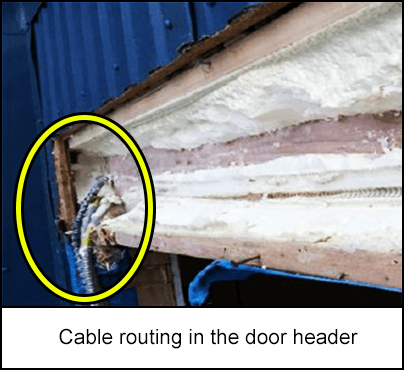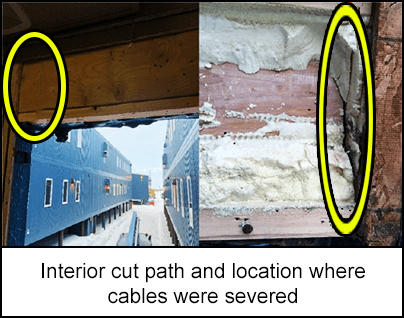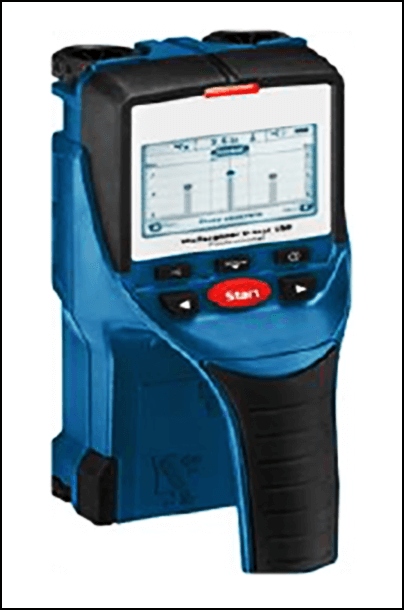-
What happened?
Workers were removing a camp door header.
They removed materials in layers before cutting into the door header with an insulated reciprocating saw.
Four live 120 volt cables were severed inside a ½ inch metal flexible conduit.
The associated circuit breakers tripped (as designed).
No personnel were shocked or injured.

-
Why did it happen?
The live electrical wiring was not identified during the planning process.
- The wire routing was not identified on drawings.
- It is not common to find electrical cables within door headers.
The permit pack did not include any information on electrical hazards (as they were not previously identified).
The demolition work was not subject to existing task hazard assessment processes (including identifying hidden hazards).

-
What did they learn?
Incorporate demolition work into task hazard assessment process. Include triggers to identify hidden/unknown hazards such as electrical wiring.
Use scanners to identify hidden electrical hazards (e.g. in walls, doors, floors).

-
Ask yourself or your crew
Have you ever found something unexpected like this whilst carrying out a task?
Do you have access to all the equipment you might need for your job (e.g. scanners, protective apparel)? If not, what should you do?
How can you check that your permits include all the hazards you might encounter?
What other hazards should you watch out for during demolition tasks?

Add to homescreen
Content name
Select existing category:
Content name
New collection
Edit collection
What happened?
Workers were removing a camp door header.
They removed materials in layers before cutting into the door header with an insulated reciprocating saw.
Four live 120 volt cables were severed inside a ½ inch metal flexible conduit.
The associated circuit breakers tripped (as designed).
No personnel were shocked or injured.

Why did it happen?
The live electrical wiring was not identified during the planning process.
- The wire routing was not identified on drawings.
- It is not common to find electrical cables within door headers.
The permit pack did not include any information on electrical hazards (as they were not previously identified).
The demolition work was not subject to existing task hazard assessment processes (including identifying hidden hazards).

What did they learn?
Incorporate demolition work into task hazard assessment process. Include triggers to identify hidden/unknown hazards such as electrical wiring.
Use scanners to identify hidden electrical hazards (e.g. in walls, doors, floors).

Ask yourself or your crew
Have you ever found something unexpected like this whilst carrying out a task?
Do you have access to all the equipment you might need for your job (e.g. scanners, protective apparel)? If not, what should you do?
How can you check that your permits include all the hazards you might encounter?
What other hazards should you watch out for during demolition tasks?
Four live 120 volt cables were severed inside an ½ inch metal flexible conduit while removing a camp door header with an insulated reciprocating saw. No personnel were shocked or injured.













